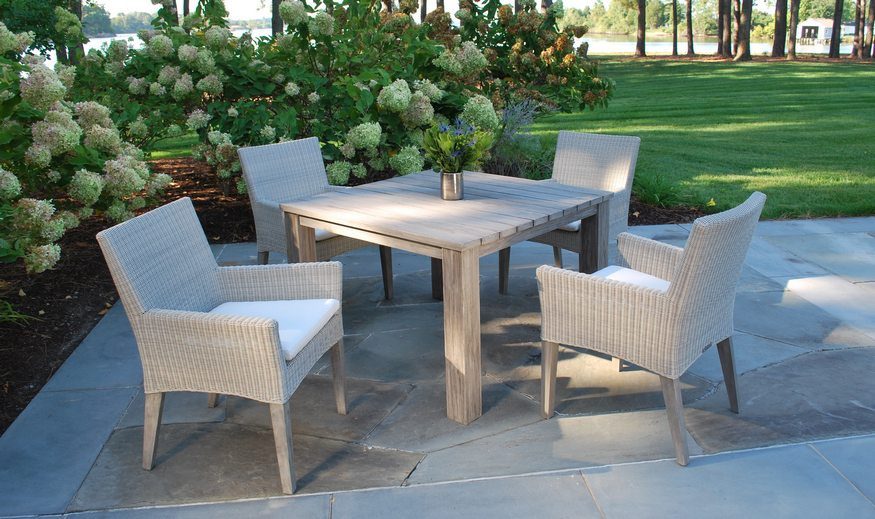Outdoor living is so popular now. So it stands to reason that we all have a piece of furniture or two that would benefit from some extra attention, especially after a summer of steady use and exposure to the elements. Even furniture that is treated to be weather resistant, or spends the winter under a patio cover of some sort needs to be cared for or maintained. Spend a little time now, and your furniture will be in tip top shape for the rest of this season, and for lots of springs, summers and falls to come.
The single most important thing that you can do to extend the life of your furniture investment is to keep it clean. Moisture and dirt left on your furniture can grow mold and mildew during the cool, damp months. Mold can spread very quickly, becoming a big problem. Frames made of metal, wicker or plastics can be easily cleaned with warm soapy water. For wood furniture, use a manufacturer-recommended cleaner.
Are there any materials that can be left outside unprotected? Metal furniture made of aluminum or steel is usually powdered coated and is very durable. Regularly wash away any dust or dirt and apply a coat of automotive wax. It can be left covered or uncovered. But despite its reputation, wrought iron furniture is susceptible to rusts, so check your pieces often and protect them with covers or a sturdy tarp to keep in the winter months.
Wood furniture pieces made of teak or Ipe, are the most durable. If kept clean, there is little else to do. Don’t cover your teak though, as trapped moisture can cause mold and mildew to develop. Natural wicker and rattan should be stored inside in a dry place. But synthetic wicker furniture can stay outdoors year-round.
And what about fabrics? It’s a good idea to clean any spills or stains on cushions, umbrella and hammocks as soon as they happen, and paramount before end-of-season storing. Stains allowed to sit through a winter season can be impossible to remove later. Most outdoor fabrics are synthetics that are designed to withstand most of what our weather throws at them. But any measures that you take to clean and dry them regularly will certainly extend their life. And don’t forget to inspect umbrella frames and canopies for cocoons and other evidence of insects. Once hatched, these critters can chew holes in the fabric.
If your fabrics are stained, use warm, soapy water to remove any stubborn spots, and be sure to let the cushions dry completely to prevent mildew. Setting cushions on their ends and fully opening umbrellas will help. Then you can let a sunny afternoon do the drying. Once dry, apply a fabric guard product. Then you can store your fabric items indoors in plastic bags or in leak-proof containers.
It’s a little sad to think about moving indoors after spending so much time enjoying our outdoor living spaces. But when Indian summer gives way to a blustery autumn, you’ll find that winterizing is so much easier to do if you’ve done a bit of preparation.

